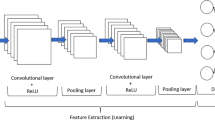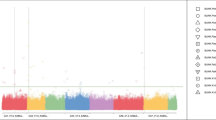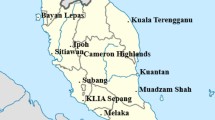Abstract
The world population continues to increase which imposes rising demand in agriculture production. How to improve crop breeding to feed the growing population is a significant challenge. The traditional crop breeding is resource-intensive and time-consuming. Predictive modeling on crop yield can speed up the breeding process and make it resource-efficient. In this paper, a genetic algorithm (GA)-assisted deep learning solution method is proposed for the crop yield prediction. The proposed method consists of two phases, i.e., the global search phase and the local search phase. In the global search phase, GA is used to search for the best initial weights of the neural network. In the local search phase, random perturbation is added to avoid the local optimum and vanishing gradient problems. A case study of crop yield prediction is conducted to compare the proposed method and other gradient-based methods. The results show that the proposed method outperforms the gradient-based methods in terms of convergence speed and prediction accuracy.









Similar content being viewed by others
References
Affes Z, Hentati-Kaffel R (2019) Forecast bankruptcy using a blend of clustering and MARS model: case of US banks. Ann Oper Res 281(1–2):27–64
Ashfahani A, Pratama M, Lughofer E, Ong Y-S (2020) DEVDAN: deep evolving denoising autoencoder. Neurocomputing 390:297–314
Assunção F, Lourenço N, Machado P, Ribeiro B (2019) Fast denser: efficient deep neuroevolution. In: Paper presented at the European Conference on Genetic Programming.
Baral C, Fuentes O, Kreinovich V (2018) Why deep neural networks: a possible theoretical explanation. Constraint Programming and Decision Making: Theory and Applications. Springer, New York, pp 1–5
Bau D, Zhu J-Y, Strobelt H, Lapedriza A, Zhou B, Torralba A (2020) Understanding the role of individual units in a deep neural network. Proc Natl Acad Sci 117(48):30071–30078
Bengio Y, Simard P, Frasconi P (1994) Learning long-term dependencies with gradient descent is difficult. IEEE Trans Neural Netw 5(2):157–166
Bertsimas D, Tsitsiklis J (1993) Simulated annealing. Stat Sci 8(1):10–15
Bottou L (2010) Large-scale machine learning with stochastic gradient descent. In: Proceedings of COMPSTAT'2010. Springer pp. 177–186
Bremermann HJ (1962) Optimization through evolution and recombination. Self-Organ Syst 93:106
Chandwani V, Agrawal V, Nagar R (2015) Modeling slump of ready mix concrete using genetic algorithms assisted training of Artificial Neural Networks. Expert Syst Appl 42(2):885–893. https://doi.org/10.1016/j.eswa.2014.08.048
Colas C, Madhavan V, Huizinga J, Clune J (2020) Scaling map-elites to deep neuroevolution. In: Paper presented at the Proceedings of the 2020 Genetic and Evolutionary Computation Conference
Comstock R, Moll RH (1963) Genotype-environment interactions. Stat Genet Plant Breed 982:164–196
Dahl GE, Sainath TN, Hinton GE (2013) Improving deep neural networks for LVCSR using rectified linear units and dropout. In: Paper presented at the 2013 IEEE international conference on acoustics, speech and signal processing
Davis L (1991) Handbook of genetic algorithms
Davis N (2017) The selfish gene: Macat Library.
de Oliveira Florentino H, Irawan C, Jones DF, Cantane DR, Nervis JJ (2018) A multiple objective methodology for sugarcane harvest management with varying maturation periods. Ann Oper Res 267(1–2):153–177
Des Marais DL, Hernandez KM, Juenger TE (2013) Genotype-by-environment interaction and plasticity: exploring genomic responses of plants to the abiotic environment. Annu Rev Ecol Evol Syst 44:5–29
Gerland P, Raftery AE, Ševčíková H, Li N, Gu D, Spoorenberg T, Lalic N (2014) World population stabilization unlikely this century. Science 346(6206):234–237
Han J, Moraga C (1995) The influence of the sigmoid function parameters on the speed of backpropagation learning. In: Paper presented at the International Workshop on Artificial Neural Networks
Hanin B (2018) Which neural net architectures give rise to exploding and vanishing gradients? In: Paper Presented at the Proceedings of the 32nd international Conference on Neural Information Processing Systems
Hinton G, Deng L, Yu D, Dahl GE, Mohamed A-R, Jaitly N, Sainath TN (2012) Deep neural networks for acoustic modeling in speech recognition: the shared views of four research groups. IEEE Signal Process Mag 29(6):82–97
Holland JB (2006) Estimating genotypic correlations and their standard errors using multivariate restricted maximum likelihood estimation with SAS proc mixed. Crop Sci 46:642–654. https://doi.org/10.2135/cropsci2005.0191
Johnson R, Zhang T (2013) Accelerating stochastic gradient descent using predictive variance reduction. In: Paper Presented at the Advances in Neural Information Processing Systems
Kang MS (1997) Using genotype-by-environment interaction for crop cultivar development. In: Sparks DL (ed) Advances in Agronomy. Academic Press, Cambridge, pp 199–252
Karlik B, Olgac AV (2011) Performance analysis of various activation functions in generalized MLP architectures of neural networks. Int J Artif Intell Expert Syst 1(4):111–122
Kaveh F, Tavakkoli-Moghaddam R, Triki C et al (2021) A new bi-objective model of the urban public transportation hub network design under uncertainty. Ann Oper Res 296:131–162. https://doi.org/10.1007/s10479-019-03430-9
Kingma DP, Ba J (2015) Adam: a method for stochastic optimization. In:Paper presented at the ICLR
Kitano H (1990) Designing neural networks using genetic algorithms with graph generation system. Complex Syst 4(4):461–476
Lehman J, Miikkulainen R (2013) Neuroevolution. Scholarpedia 8(6):30977. https://doi.org/10.4249/scholarpedia.30977
Lehman J, Chen J, Clune J, Stanley KO (2018) Safe mutations for deep and recurrent neural networks through output gradients. In: Paper Presented at the Proceedings of the Genetic and Evolutionary Computation Conference
Liu W, Wang Z, Liu X, Zeng N, Liu Y, Alsaadi FE (2017) A survey of deep neural network architectures and their applications. Neurocomputing 234:11–26
Mei Y, Li X, Yao X (2014) Cooperative coevolution with route distance grouping for large-scale capacitated arc routing problems. IEEE Trans Evol Comput 18(3):435–449
Mukkamala MC, Hein M (2017) Variants of rmsprop and Adagrad with logarithmic regret bounds. In: Paper presented at the International Conference on Machine Learning
Nair V, Hinton GE (2010) Rectified linear units improve restricted boltzmann machines. In: Paper Presented at the Icml
Olimov B, Karshiev S, Jang E, Din S, Paul A, Kim J (2020) Weight initialization based-rectified linear unit activation function to improve the performance of a convolutional neural network model. Concurrency Computat Pract Exper. e6143. https://doi.org/10.1002/cpe.6143
Risi S, Stanley KO (2019) Deep neuroevolution of recurrent and discrete world models. In: Paper presented at the Proceedings of the Genetic and Evolutionary Computation Conference
Robinson MR, Beckerman AP (2013) Quantifying multivariate plasticity: genetic variation in resource acquisition drives plasticity in resource allocation to components of life history. Ecol Lett 16(3):281–290
Ruehle F (2017) Evolving neural networks with genetic algorithms to study the string landscape. J. High Energ. Phys. 38. https://doi.org/10.1007/JHEP08(2017)038
Salhi A, Alsoufi G, Yang X (2019) An evolutionary approach to a combined mixed integer programming model of seaside operations as arise in container ports. Ann Oper Res 272(1–2):69–98
Samek W, Binder A, Montavon G, Lapuschkin S, Müller K-R (2016) Evaluating the visualization of what a deep neural network has learned. IEEE Trans Neural Netw Learn Syst 28(11):2660–2673
Schaeffer L, Jamrozik J (2008) Random regression models: a longitudinal perspective. J Anim Breed Genet 125(3):145–146
Schwardt M, Fischer K (2009) Combined location-routing problems—a neural network approach. Ann Oper Res 167(1):253
Sherstinsky A (2020) Fundamentals of recurrent neural network (RNN) and long short-term memory (LSTM) network. Phys D Nonlinear Phenom 404:132306
Stinchcombe JR, Kirkpatrick M, Group, F.-v. T. W (2012) Genetics and evolution of function-valued traits: understanding environmentally responsive phenotypes. Trends Ecol Evol 27(11):637–647
Wang D, Oh S-K, Kim E-H (2018) Design of space search-optimized polynomial neural networks with the aid of ranking selection and L2-norm regularization. J Electr Eng Technol 13(4):1724–1731
Whitley D (1994) A genetic algorithm tutorial. Stat Comput 4(2):65–85
Whitley D, Starkweather T, Bogart C (1990) Genetic algorithms and neural networks: optimizing connections and connectivity. Parallel Comput 14(3):347–361
Yao X (1999) Evolving artificial neural networks. Proc IEEE 87(9):1423–1447
Yarotsky D (2017) Error bounds for approximations with deep ReLU networks. Neural Netw 94:103–114
Zhang J, He T, Sra S, Jadbabaie A (2019) Why gradient clipping accelerates training: a theoretical justification for adaptivity. In: Paper Presented at the International Conference on Learning Representations
Author information
Authors and Affiliations
Corresponding author
Ethics declarations
Conflict of interest
The authors certify that they have NO affiliations with or involvement in any organization or entity with any financial interest (such as honoraria; educational grants; participation in speakers’ bureaus; membership, employment, consultancies, stock ownership, or other equity interest; and expert testimony or patent-licensing arrangements), or non-financial interest (such as personal or professional relationships, affi liations, knowledge or beliefs) in the subject matter or materials discussed in this manuscript.
Additional information
Publisher's Note
Springer Nature remains neutral with regard to jurisdictional claims in published maps and institutional affiliations.
Rights and permissions
About this article
Cite this article
Bi, L., Hu, G. A genetic algorithm-assisted deep learning approach for crop yield prediction. Soft Comput 25, 10617–10628 (2021). https://doi.org/10.1007/s00500-021-05995-9
Accepted:
Published:
Issue Date:
DOI: https://doi.org/10.1007/s00500-021-05995-9




